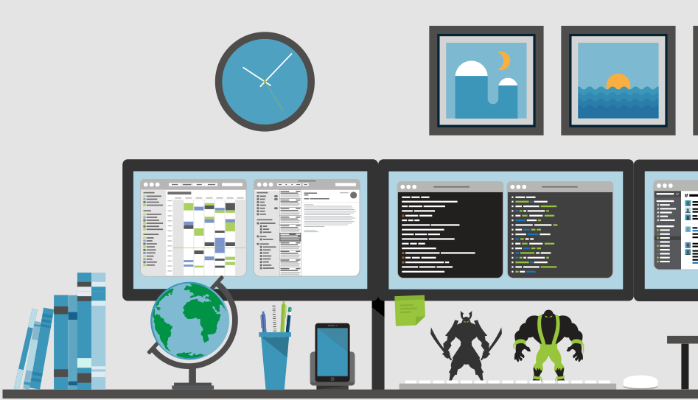Before we dive into big data recruitment and how it can help you recruit top talent, we need to start with a solid foundation. It’s important to understand big data and what it is before we can talk about how to use it as a recruitment tool.
Big data is having a tremendous impact on how modern businesses use and interpret data. It’s currently used for everything from financial services, to gauging productivity, to even monitoring the weather. Companies across the spectrum — and from every industry — are looking to big data for solutions on how to leverage available data in meaningful ways. In fact, 42 percent of companies have already invested in or plan to within the next year.
So, it should come as no surprise that the recruiting industry has integrated big data recruitment into its recruiting efforts.This helps companies sort through a wealth of information to ultimately see a more complete picture of candidates.
Why Use Big Data Recruitment?
One of the quickest ways to answer this question is to point to the amount of information constantly proliferating online. It’s impossible to use the same methods of recruiting you did 10 or even just five years ago. But more and more information to sift through means more and more time wasted during the hiring tradition process, especially if the candidate you’re researching turns out to be a dud.
It’s become a real pain point for recruiters who just ten years ago were constantly searching for candidates and are now inundated with too many prospects. There are more than 238 million members of LinkedIn alone, meaning recruiters literally have access to hundreds of millions of resumes at their fingertips. It’s easy to feel crushed by the weight of all this data.
The Three V’s of Big Data Recruiting
Volume
-
A lot of variables are considered when it comes to finding the perfect candidate through this. Thousands upon thousands of bytes of data are crunched when recruiters look for someone with the right skill set.
-
For example, big data applied to recruiting for tech positions would look at a candidate’s publicly offered source code, their LinkedIn profile and other social media channels, the websites they frequent, and even the way they talk about technology.
Velocity
-
As we mentioned in the introduction, the traditional hiring process can take anywhere from 29 to 43 days. And this is only the average — clearly some hiring processes to fill certain positions can take months.
-
Big data recruiting makes the hiring process faster because of the velocity at which it recognizes and evaluates information.
-
This helps recruiters and HR managers cut down on the time it takes to research top candidates, because suddenly all the relevant information is right at hand. This means spending more time personally connecting with candidates and less time wasted pursuing the wrong people.
Variety
-
One of the best reasons to use big data recruiting actually relates to variety. When it comes to big data, one of the attributes that sets it apart from traditional analytics is the ability to combine information from a variety of different sources.
For instance, big data can look at text and video files and combine the information together. When recruiting for technical positions, big data can look at a candidate’s open source code and their social media channels and combine this information into a meaningful whole.
How Does Big Data Find Candidates?
-
Using the three v’s previously discussed (variety, velocity, and volume), big data recruiting looks at candidates from several angles. Instead of just evaluating the information on a candidate’s resume, big data recruiting goes out into the Internet wilderness on an exploratory hunt and brings back a wealth of information on the candidate.
-
A candidate’s social media profiles. Special emphasis is put on candidates who demonstrate their expertise on social media channels like Facebook and Twitter by sharing advice, thought leadership, and interesting industry insights.
A candidate’s resume information. Obviously the traditional resume still exists for a reason. In addition to tech-heavy evaluations, big data recruiting can look at a candidate’s more traditional credentials.
How Does Big Data Bring More Context To Resumes?
-
By analyzing candidate data and interpreting the information uncovered to understand the true skills and interests of an individual, big data recruiting can actually help your organization find the best undercover talent.
Through big data recruiting you might find a candidate who skipped college, but who performs at a higher level than even an Ivy-League grad. Even if a candidate doesn’t have a flashy employer company brand-name college on his or her resume, the person may still be a great hire.
How Does Big Data Help You Engage With Candidates?
Guys! This isn’t just a smart tactic for finding excellent candidates before your competitors, it also can help you engage more personally and more fruitfully with top talent.
Big data recruiting can help with candidate engagement in two ways:
-
Using big data and analytics can help you understand the better kind of candidates you need. It can help you break down barriers and better understand which candidates will be high performers and which candidates just look good on paper.
-
By providing a multitude of information, big data recruiting can help employers get a more personal feel for candidates earlier in the hiring process. With the proliferation of social media and personal blogs, you can get to know a candidate’s personality before the interview. This can allow you to skip right to candidates who are good fit for your organizational culture.
Future of Big Data in Recruitment
Big data recruiting is a tool like any other without any guarantee of success. Still, there are success stories to be had when it comes to big data recruiting. One example actually involves a position we hired for at Gild. When our company was looking for a developer, we came across Jade Dominguez.
-
Mr. Dominguez might not have popped up if we hadn’t been searching and analyzing public data. After all, he had skipped college and hadn’t previously been employed by a big-name employer. He didn’t meet the markers of success most companies use when recruiting top talent. Yet, he did have something all companies need: exceptional skills and abilities.
-
Thanks to his high score provided by our tech recruitment software, Gild Source, we didn’t miss a diamond in the rough like Jade just because he didn’t fit into our preconceived notions of what a “good” candidate looks like on paper. Because of this, we were able to find a top developer other companies were ignoring.
On the surface, big data recruiting appears complicated and without a clear path to success. But with a little knowledge of how it works, any company can use big data recruiting to its advantage.
There’s a battle for talent out there, and you can’t afford to get left behind. The best and brightest candidates are being scooped up left and right by your competitors. So what’s the solution? Throw more time and money into the traditional hiring process, hoping you’ll get the results you need?
No, the answer is to use the information that’s available to you, so you can be smarter in your recruiting efforts. Don’t fight with your competitors over same shallow candidate pool. Expand your definition of who the ‘right’ candidate is and, use big data recruiting to find the talent you need to keep your company growing and innovating.








Leave a Reply